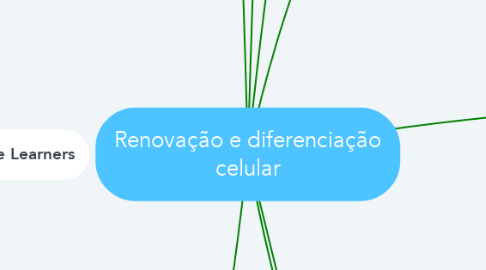
1. Active and Reflective Learners
1.1. Active Learners
1.1.1. Don't like most lectures
1.1.2. Experimentalists
1.1.3. Working Groups
1.1.4. + interative and fundamental classes
1.1.5. + group discussion
1.1.6. + Experimentation (explain to someone helps)
1.2. Reflective Learners
1.2.1. theorethicians
1.2.2. - situations where they are pushed
1.2.3. - effective learning
1.2.4. work better with themselves or one more person
1.2.5. they like to examine and manipulate the information
2. Sensing and Intuitive Learners
2.1. Carl Jung introduced the two ways people tend to perceive the world
2.1.1. Sensing
2.1.1.1. Observing
2.1.1.2. Gathering data through the senses
2.1.2. Intuition
2.1.2.1. Idirect Perception
2.1.2.1.1. Imagination
2.1.2.1.2. Perception
2.1.3. Measures degree individual prefers sensing or intuition. Method Myers-Briggs Type Indicatior (MBTI)/1940. Studies to understand how sensation and intuition aproach learning
2.1.3.1. Senstion
2.1.3.1.1. Memorize facts e details
2.1.3.1.2. Careful
2.1.3.1.3. Standart methods for solving problems
2.1.3.1.4. Slow to identify Symbols
2.1.3.2. Intuition
2.1.3.2.1. Ease to assimilate symbols
2.1.3.2.2. Careless
2.1.3.2.3. Learn new concepts
2.1.3.2.4. Principles and theories
2.1.3.2.5. Complications
3. Visual and auditory learners
3.1. Visual
3.1.1. Pictures, diagrams,etc
3.1.1.1. 30% students learner best when they see
3.1.1.2. 10% students learner best when they read
3.2. Kinesthetic
3.2.1. Taste, touch and smell
3.2.1.1. 90% students leaner best when they Say and Do something
3.3. Visual and auditory
3.3.1. Visual material, films, demonstration of working process
3.3.1.1. 50% students leaner best when they hear and see
3.4. Auditory
3.4.1. Discussion, verbal explanation, sounds
3.4.1.1. 26% students learner best when they hear
3.4.1.2. 70% students learner best when they say
4. Inductive and deductive learns
4.1. Deduction
4.1.1. Consequences
4.2. Scientific Method
4.3. Induction
4.3.1. Principles
5. Learning Syles
5.1. Perception: Sensory X Intuitive
5.2. Input: Visual X Auditory
5.3. Organization: Inductive X Deductive
5.4. Process: Active X Reflective
5.5. Progress: Sequentially X Globally
6. Learning ways
6.1. Build mathematical models
6.2. Seeing/Hearing
6.3. Reflecting/Acting
6.4. Reasoning locally and intuitivaly
6.5. Memorize/Visualize/Draw analogies
7. Teaching ways
7.1. Lecture
7.2. Demonstrate/Discuss
7.3. Focus on principles
7.4. Focus on application
7.5. Emphasize memory/understanding
8. Dimensions of learning style
8.1. Reception step
8.1.1. External information
8.1.2. Internal information
8.2. Processing step
8.2.1. Simple memorization
8.2.2. Inductive/Deductive reasoning
8.2.3. Reflection/Action
8.2.4. Introspection/Interaction with others
8.3. Models
8.3.1. Teaching styles
8.3.1.1. Content: Concrete X Abstract
8.3.1.2. Organization: Inductive X Deductive
8.3.1.3. Student participation: Active X Passive
8.3.1.4. Perspective: Sequential X Global
8.3.1.5. Presentation: Visual X Verbal
9. Sinalização
9.1. Global Learners
9.1.1. intuitive leaps
9.1.1.1. if they don't understand the material they don't know how to explain
9.1.2. + difficult to explain the solution
9.1.3. Don't know how they solved the problem
9.2. Sequential Learners
9.2.1. Convergent thinking + analysys
9.2.2. logically ordered progression
9.2.3. linear processes
9.2.4. cronologically processes
9.2.5. - difficult to learn when knowing at least a part of the material
